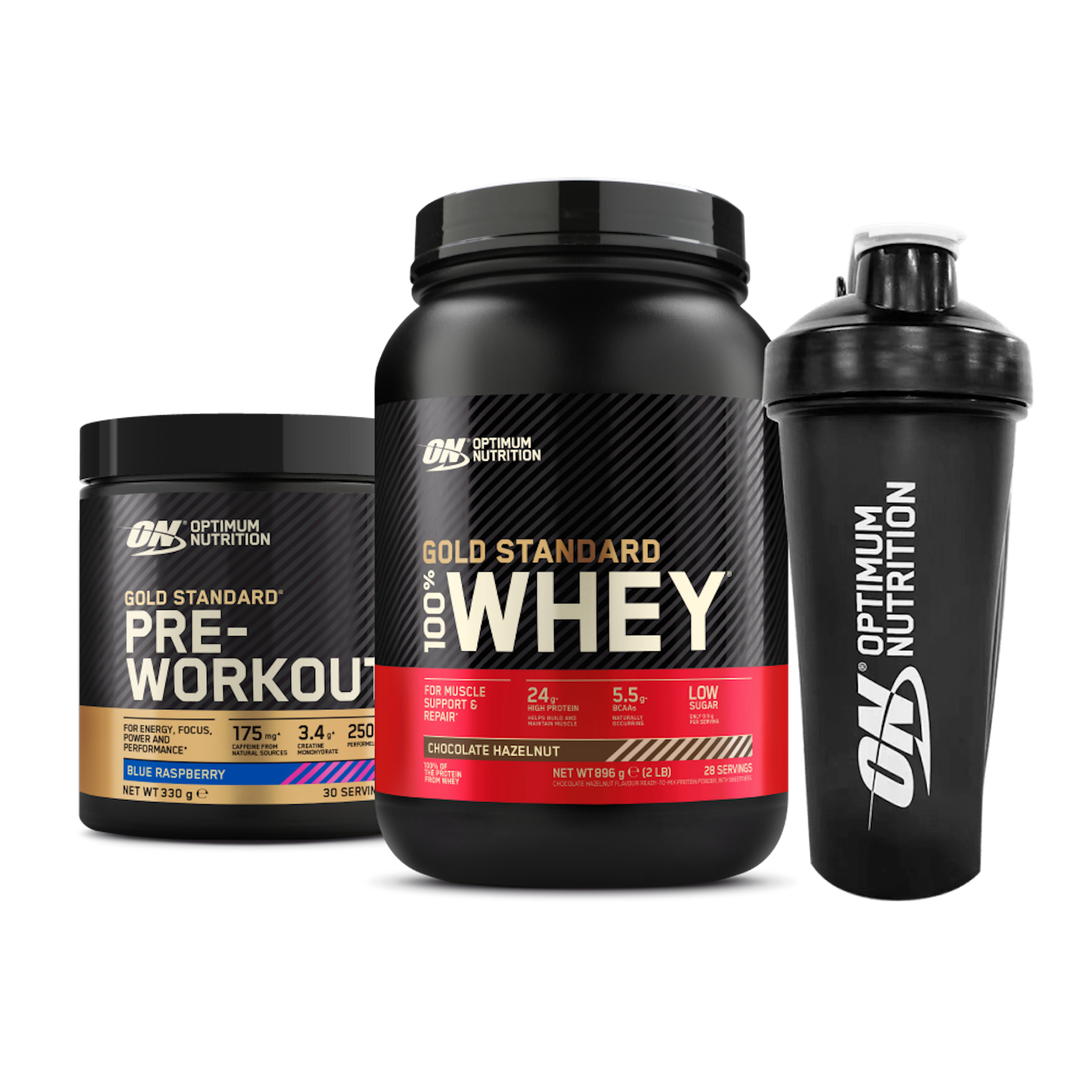This fundamental guide covers weight training in detail, although at a level that should be accessible to new trainers and those with some experience as well.
Weight training is an organized exercise in which muscles of the body are forced to contract under tension using weights, body weight or other devices in order to stimulate growth, strength, power, and endurance. Weight training is also called “resistance training” and “strength training.”
The basis of weight training success is a combination of factors sometimes called FITT.
- Frequency of training — How often
- The intensity of training — How hard
- Time spent — Session time
- Type of exercise — Which exercises
Muscles and Movements
An understanding of your muscles and how they work is essential for strength training.
There are two types of muscle contractions:1
- Isometric contractions: The muscle does not lengthen. An example of this is pushing against a wall.
- Isotonic contractions: The muscle shortens and lengthens. The shortening phase is called a “concentric: contraction and the lengthening phase is the “eccentric” contraction.
An example is a dumbbell arm curl where the muscle shortens as you raise the dumbbell (concentric) and lengthens as you lower it (eccentric). Eccentric contractions are mainly what give you sore muscles.
Joint Movements
Muscle contractions relate to joint movements. Four important joint movements are flexion and extension, abduction and adduction.2
- Flexion is when you decrease the angle in the joint. An example is the upward movement of an arm curl which decreases the angle in the elbow joint.
- The extension is an opposite movement, that is, increasing the angle while lowering the weight.
- Abduction is moving a body part away from the middle of the body in the side plane. An example is raising a leg out to the side of the body.
- Adduction is bringing the body part toward the middle line of the body.
Muscle Groups
The main muscle groups of interest that make up the human body are the abdominals, adductors (inside thigh), dorsal muscles (middle back), shoulders, arm extensors, wrist extensors, gluteals (butt), arm flexors, wrist flexors, scapular fixers (shoulder blade), thigh flexors (hamstrings), lumbar muscles (lower back), surae (calves), pectorals (chest), quadriceps (front thigh) and trapezii (upper back).
Looking at it in less detail, the major muscle groups are the arms, shoulders, chest, back, legs, buttocks, and abdomen. There are several ways to target all of your major muscle groups during training:
- You can perform a range of exercise that works your entire body in a single session (e.g. high-intensity interval training, or HIIT; or CrossFit-style workouts)
- You can do body part split-type training (e.g. upper body-focused day, lower-body focused day), which is common during traditional bodybuilding workouts
- You can focus on the major lifts (squat, bench press, deadlift, clean & jerk, snatch) which tend to focus on the large muscle groups.
Reps, Sets, and RM
You will need to know these basic terms used in workouts:
- A repetition (rep) is one completion of an exercise: one chin-up, one squat, one arm curl.
- A set is the selected number of repetitions before you rest. Let’s say 10 repetitions to 1 set of arm curls.
- The rest interval is the time between sets.
- The 1RM or repetition maximum is your personal best or the most you can lift once in any exercise. So 12RM is the most you can lift for 12 repetitions.
Example: Barbell Arm Curl, 40 pounds 3 X 12 RM, 60 seconds
That would mean 3 sets of 12 maximum arm curls with a weight of 40 pounds with 60 seconds rest in between sets.
So how do you know how many reps, sets and what rest time is best for you? Here’s how it works in broad terms. The finer details are for you and your trainer to work on.
- Strength training uses the most weight, the least number of repetitions, and the longest rest.
- Hypertrophy or muscle size training utilizes lighter weights, more repetitions, and less rest time.
- Strength endurance has less weight again, with more repetitions and even less rest.
- Power training involves lighter weights and longer rests while concentrating on the speed of the lift.
These are general principles. Adjust sets, reps, rest, and exercise types to find the best combination for you.
Check Out Our List Of The Best Supplements For Building Muscle, Shredding Muscle, Recovery, And Great Health, and Wellness Products! Purchase ifbnewsfeed.org‘s apparels Here: ifbnewsfeed.org
Example
Here’s how an exercise program for the bench press might look according to different goals, starting from a theoretical personal best of 160 pounds (73 kilos):
Bench Press – 1RM = 160 pounds
- Strength: 140 pounds, 2 X 5, 180 seconds
- Hypertrophy: 120 pounds, 3 X 10, 60 seconds
- Strength Endurance: 100 pounds, 3 X 15, 45 seconds
- Power: 90 pounds, 3 X 8, 120 seconds
One point to note here is that it is mandatory to take adequate rest between heavily loaded sets in strength training in order to achieve the best results.3 In power training, a sufficient rest interval is also important because each lift has to be done at a high explosive velocity for the best effect.
So, in strength and power training, make sure you get the required rest in between sets. In hypertrophy and strength endurance, it’s not as crucial to use shorter intervals, although it is ideal if you can.
Speed of Exercise Execution
Contraction velocity is the speed at which an exercise is performed and this also has an effect on training outcomes. Here are some general guidelines for weight training goals.
- Strength: 1-2 seconds concentric and eccentric
- Hypertrophy: 2-5 seconds concentric and eccentric
- Endurance: 1-2 seconds concentric and eccentric
- Power: less than 1 second concentric, 1-2 seconds eccentric
Calculating 1RM
According to the US National Strength and Conditioning Association, the theoretical distribution of repetitions against a percentage of 1RM, your maximum lift, is distributed as follows, using the bench press example of 160 pounds 1RM:
- 100% of 1RM: 160 pounds —1 repetition
- 85% of 1RM: 136 pounds — 6 repetitions
- 67% of 1RM: 107 pounds — 12 repetitions
- 65% of 1RM: 104 pounds — 15 repetitions
- 60% of 1RM: 96 pounds — warmup reps
This means that you should be able to do 1 lift at your personal best, 6 lifts at 85 percent of your personal best, and 15 lifts at 65 percent of your 1RM personal best – and with proportional percentages for any lift in between, and probably below.
Don’t consider this an absolute reference; it’s only a guide and a basis from which to choose appropriate weights for working out.
Building Strength
The strength, size, and endurance of muscles are built by the overload principle.3 This entails lifting increasingly heavy weights or increasing the volume of work overtime.
Strength, as distinguished from increased muscle size (called hypertrophy), is built by training the neuromuscular system and the interaction between the nerves and muscle, rather than muscle anatomy, the size, and the constitution of muscle fibers. Heavier weights with fewer repetitions and longer rest periods are employed to prioritize strength.
As a general rule, larger muscles will make you stronger, but probably not stronger than someone who trains for strength, all else being equal.
Strength training can involve loads in the range of 3-6RM with higher loads of 1-3RM for more experienced lifters and a variable number of sets according to the program.
Building Muscle Size
Hypertrophy training usually emphasizes more repetitions with a lighter weight than strength training, often with shorter rest intervals between sets. This training enhances the metabolic factors that result in size increases.
You can get stronger training for hypertrophy, but your goals should be quite clear if you are interested in competition for bodybuilding or powerlifting. If you want a combination of strength and hypertrophy, then you need to identify a weight training program that will provide a compromise, which is what most non-competition weight trainers are looking for.
One way muscle gets bigger is a process of damage and repair at the micro-level. Small tears, sometimes called microtrauma, occur in muscle fibers under load and are repaired and rebuilt stronger when the trainer recovers.4 It’s a bit like one step back and two steps forward at the cellular level.
There exists some disagreement over whether muscles get bigger by increased muscle fiber (cell) size or by splitting off and creating new cells as well. At the least, hypertrophy results from an increase in the contractile units called myofibrils and also from increased fluid in the cell called the sarcoplasm.
Hypertrophy training usually employs repetitions of 8-12RM with a variable number of sets but often in the range 2-5.
Building Muscle Endurance
Muscle endurance is trained at the higher end of the repetition spectrum.5 For example, doing 15-20 repetitions per set targets local muscle endurance rather than strength or hypertrophy. Again, doing this sort of muscle endurance training will provide some strength and hypertrophy compared to not training, and it can result in larger increases in aerobic conditioning than higher-intensity programs.
Muscle endurance training can use repetitions in the range 15-20 with a variable number of sets, but 3 is common. However, you have to ask yourself if training in a skill activity like running or swimming or biking is not a more productive use of your time.
Building Muscle Power
Power is the rate at which work is done, so power involves time. If you can lift the same weight faster than your friend then you have more power. Training for power involves increasing the speed of the lifts. The concept of power is useful in weight training for sports such as football where strength, bulk, and speed are desirable.
Power training involves building strength first, then progressing to light loads performed at very fast or even explosive contraction velocity. Loads as light as 30-60% 1RM with rests of 2-3 minutes between sets are recommended by the American College of Sports Medicine.
Weight training, strength training, or resistance training, whatever you like to call it, builds the foundation for strength, power, bulk, and muscle endurance for the following activities and sports.
- Bodybuilding, which specializes in body shaping and muscular definition, particularly for competition purposes. Hypertrophy programs predominate here.
- Sports-specific programs utilize exercises that support and enhance, as far as possible, the muscular actions of the sport. An example might be training swimmers with exercises that simulate the pull through the water, targeting shoulders, arms and back muscles. Strength-endurance and bulk and power programs are useful yet highly variable for particular sports and need to be designed so that they do not interfere with the skill set required for the sport.
- Weight loss and fitness include exercises that provide an all-around exercise program for adding muscle and losing body fat. Bodybuilders just wanting to look good at the beach are included in the category.
- Olympic weightlifting is a specialty weightlifting sport that utilizes only two exercises, the clean and jerk, and the snatch, although there are many training exercises. Each lift is highly specialized and technical, requiring much training and practice.
- Powerlifting competition requires only three lifts, the squat, bench press, and deadlift. Again, strength and technique programs are the basis of Powerlifting.
Frequency and Overtraining
How often and how much you train depends on your goals, experience, age, health, fitness, and other factors such as equipment accessibility and time availability for training. A trainer or coach should take all of these factors into consideration and design a plan that suits your circumstances and goals.
The fine balance in weight training is the balance between muscle and nervous system stimulation, adaptation, and recovery. Too much intensity, volume, and frequency too quickly, and overtraining syndrome can destroy your progress. Here are some signs of overtraining:
- Ongoing fatigue, poor performance
- Viral and bacterial infections
- Unintended loss of weight
- Regular musculoskeletal injury
- Cessation or irregularity of periods
- Hormonal imbalance
- Bone density loss
- Poor sleeping and eating patterns
Training three times per week is a sweet spot for optimum progression for beginners, although twice per seven-day week will suit some people better. A usual recommendation for novices is to allow at least 48 hours between weight sessions to allow for recovery.
For experienced and professional trainers, training six days a week is not unusual, although split systems – training different muscle groups on different days – is often practiced. If you feel you’re getting into trouble, back off and get some good advice.
Types of Exercises
Many hundreds of exercises exist to target many muscles and muscle groups and it can get more than a little confusing for the average beginner to choose. Exercise variations come with free weights, machines, racks and frames, body-only exercises, bands, balls, and more.
So, the type of exercise can be classified by equipment type, muscle target, or even fitness goal, for example, aerobic or strength exercise, treadmill or lat pulldown machine.
- Compound exercises. Compound exercises are those that involve more than one joint, and often several large muscle groups. Examples: squat, deadlift, seated cable row, lat pulldown.
- Isolation exercises. An isolation exercise is one involving only one joint and which usually targets an isolated muscle group. Examples are the dumbbell arm curl for biceps and the leg extension machine for quadriceps.
Which Exercises Should I Do?
It depends on what your goals are, what equipment and facilities you have available, your age, strength, weight experience, and commitment.
Let’s say you want to build strength and muscle mass. There is general agreement that the “big three” powerlifting lifts — the squat, bench press, and deadlift — are the core lifts for building bulk and strength.
They are technical, and perhaps even dangerous, done with free weights near the limit of your maximum, so guidance and a spotter are essential. Even so, you can start off with light weights until you get the gist of it and then progress from there.
“If you’re training for a good balance of body composition and strength, you will need to add additional back, abdomen, and shoulder exercises to the big three, along with more specific work on the front of the arms. This basic strength and muscle program gives you a suggested set of exercises. Most gyms will have a range of equipment for doing these exercises”.
In bodybuilding, where muscle definition of even the smallest muscle can be important, a wider range of isolation exercises is usually practiced. Olympic weightlifting requires specific strength and technique training.
Weight Training Programs
A training program is a schedule of frequency, intensity, volume, and type of exercise, whether for weight training or any other fitness training. In weight training, various methods and techniques are used.
Here are the variables that can be adjusted in any weight training program. Almost unlimited combinations are possible, most of which will be functional at some level but not necessarily optimum.
- Exercise selection
- Weight or resistance
- Number of repetitions
- Number of sets
- Velocity of movement
- Interval between sets
- Interval between sessions (training days/week)
- Interval between periodization cycles
Here are some prominent applications and techniques in weight training and bodybuilding programming:
- Full body training. Training all major muscle groups in a session. You choose a series of lifts, perhaps up to ten, ensuring that all major muscle groups are exercised at some level
- Split system. Alternating sessions for major muscle groups. Training, say, arms, shoulders, and back one session, then legs buttocks, abdominals the next session.
- Periodization could be described as progressing or cycling phases of training over a set time in order to achieve results at a scheduled time. Dividing a yearly program into different training modalities with different sequential goals is an example. This is common in sport-specific programs and in competition forms of weightlifting. For example, off-season maintenance, pre-season strength, early-season hypertrophy and power, active season maintenance, post-season recovery.
- Supersets. Supersetting is the practice of exercising two opposing muscle groups in quick succession for the purpose of stimulating muscle growth and providing rest in either group alternately. Leg extension and leg curl for quadriceps and hamstrings is an example.
- Compound sets. Rather than alternate different muscle groups, compound sets alternate different exercises or equipment for the same muscle group. An example is following the triceps kickback with triceps pushdown — the idea being to push the muscle far enough so that it recruits additional motor units.
- Pyramid. This type of program includes sets that progress from lighter to heavyweights of the same exercise, or even the reverse from heavy to light depending on the program. The number of sets is specified. For example, dumbbell curl:
- 20 pounds X 10 repetitions
- 30 pounds X 8 repetitions
- 40 pounds X 6 repetitions
- Drop sets are like a reverse pyramid and there are many variations. In one example you lift to failure regardless of the number of reps in the second and third sets. Start with a heavyweight and do a calculated number of repetitions; reduce the weight by, say 20 percent, perform the next set to failure; then reduce again and go to failure again with little interval rest. This is very high-intensity training. An example is the dumbbell curl as follows:
- 40 pounds X 8 repetitions
- 30 pounds X failure
- 20 pounds X failure
- Superslow. Superslow encompasses the idea of slow and measured concentric and eccentric contractions. The proposed advantages of this are disputed by many. Superslow enthusiasts recommend more or less 10 seconds for each phase of the lift.
- Eccentric training. This emphasizes the return or lowering action of any lift on the basis that this produces better hypertrophy because more muscle damage and fiber recruitment is achieved. Arm curls are a good example. You usually need assistance to get the concentric or lifting part completed.
- Sport-specific programs are designed to enhance performance in particular sports by strengthening muscle fitness specific to those sports, especially through periodized weight training.
Diet, Nutrition, and Supplements
Appropriate diet and nutrition are very important in maximizing results from any athletic training program, and weight training is certainly no exception.
- How You Should Eat for Weight Training
- What Is a Bodybuilding Diet?
- Benefits and Risks of Dietary Supplements
- Supplements for Building Muscle
- Nutrition for Muscle Growth

- Hormone Replacement Therapy regimen For Men and women
- Hormone Blood Testing for Men (Bodybuilder Blood Testing)
- Shop Optimum Nutrition Energy: Anytime & Pre-Workout
For More News And Daily Updates, Follow IFBNewsfeed.Org on Facebook, Twitter, and Instagram. Comment, Like, And Share With Everyone Who May Need To Be Updated With The Most Recent Fitness/Bodybuilding/Powerlifting And CrossFit News.







